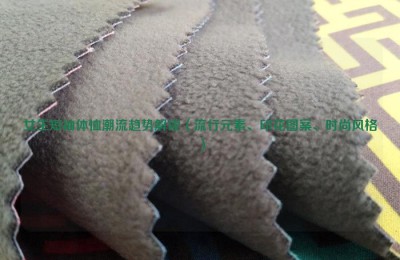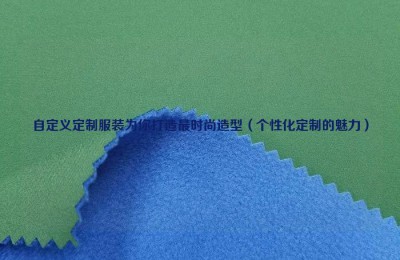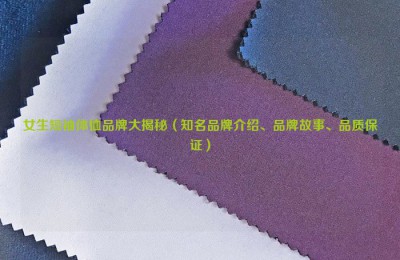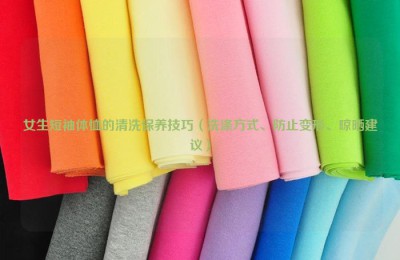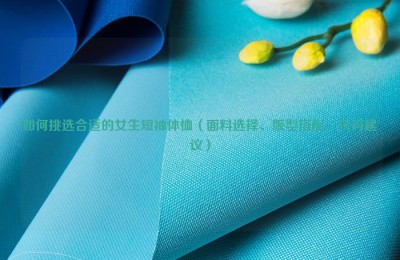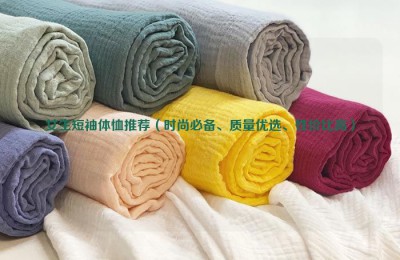It has been nearly half a year since the “Regional Comprehensive Economic Partnership Agreement” (RCEP) officially came into effect at the beginning of this year. However, many textile and garment companies have not fully utilized the dividends brought by the policy during the implementation process. In order to explore the opportunities and changes that RCEP will bring to textile enterprises’ foreign trade production and operations, and to help enterprises better seize the opportunities, reporters from China Textile News recently interviewed relevant government departments and industry experts to find answers and provide enterprises with ideas and refer to.
Establishing an efficient industrial collaboration system
The most important purpose of reaching a free trade agreement is to obtain as many zero tariffs and market opening as possible, thereby forming a unified large market. According to customs statistics, in 2021, the total textile and apparel import and export trade between China and other RCEP member countries was US$98.76 billion, accounting for 28.7% of the industry’s foreign trade. RCEP will further promote the division of labor and cooperation in the textile industry between my country and ASEAN.
The reporter learned from the RCEP series of special training sessions held by the Ministry of Commerce recently that in 2021, my country’s textile and apparel exports to RCEP member states were US$87.04 billion, accounting for 28% of my country’s textile industry’s global exports; Imports amounted to US$11.72 billion, accounting for approximately 42% of my country’s global imports. ASEAN is my country’s largest export market for chemical fibers, textile yarns and textile fabrics, of which Vietnam accounts for the largest proportion. In 2021, my country exported US$2.61 billion of textile yarn to ASEAN, a year-on-year increase of 31.7%, and exported US$22.32 billion of textile fabrics, a year-on-year increase of 27.6%. In 2021, my country imported US$3.63 billion in clothing from ASEAN, a year-on-year increase of 15.8%. Among them, the year-on-year growth of clothing imports from Vietnam, Indonesia and Thailand has reached about 20%. The RCEP agreement has made my country’s textile industry more closely linked to the textile industry in East Asia and Southeast Asia, and the flow of investment, resources, and technology within the region has further accelerated.
For example, in terms of cross-border distribution of productivity, Shenzhou International Group, one of the world’s largest knitting manufacturers, has formed an international development pattern system. It is headquartered in Ningbo, along the “ “All the Way” has formed a complete vertically integrated industrial base, with fabric or garment factories in Anqing, Anhui, Quzhou, Zhejiang, Phnom Penh, Cambodia, and Vietnam, and sales offices or representatives in Shanghai, Hong Kong, and Osaka, Japan. at. In the past two years, the group has continued to build production capacity in Southeast Asia. Currently, the garment production capacity in Vietnam and Cambodia accounts for nearly 40% of the group.
Another example is Tianhong Group, the world’s leading manufacturer of high value-added core-spun textile products, with 2.51 million spindles and 1.59 million spindles in China and overseas (mainly Vietnam) respectively. The group has Shanghai as its sales headquarters and an export sales network. Across Vietnam, North America, Europe, Brazil, Turkey, Bangladesh, Japan and South Korea. RCEP lowers trade and investment barriers and creates a unified large market, which is conducive to the optimal allocation of resources by Chinese textile and garment enterprises in the region and better achieves international layout.
Make full use of the accumulation rules of origin
RCEP member states not only include China, ASEAN, Japan, South Korea and other important global textile and apparel production bases, but also cover many important textile and apparel consumer markets around the world, providing an opportunity for our country to make full use of rules, actively participate in regional industrial cooperation, and build The highly efficient, collaborative, mutually beneficial and win-win textile and apparel industry chain in the region has added support.
For enterprises, the cumulative rules of origin are the biggest highlight of RCEP and are most beneficial to small and medium-sized enterprises engaged in import and export trade. Chen Ning, a first-level inspector of the Department of International Economic and Trade Relations of the Ministry of Commerce, said that enterprises should fully understand the commercial value of the cumulative rules of origin, conduct in-depth research on the cumulative rules of origin, actively expand the production scale of intermediate products, and attract more competitive investors to develop Cooperate to push corporate production and services to the high end of the value chain.
Liu Yaozhong, deputy director of the International Trade Office of the China Textile Industry Federation, believes that RCEP’s adoption of regional cumulative rules of origin will not only help my country expand textile intermediates such as yarns and fabrics Exporting to ASEAN and other RCEP members will strengthen my country’s influence on the textile and apparel industry chain supply chain, and will also help my country’s textile companies proactively integrate regional high-quality resources, establish an effective linkage production capacity cooperation system, and better promote the formation of my country-centered The global textile and apparel industry manufacturing base and consumption center.
In recent years, the pace of foreign investment in my country’s textile industry has accelerated, especially the backbone enterprises’ awareness of taking the initiative to expand internationally. Among the RCEP member countries, Vietnam, Singapore, Cambodia, Myanmar, Malaysia, Indonesia, Japan, etc. are all destinations for foreign investment in my country’s textile industry. RCEP further relaxes market access conditions for goods, services, investment and other fields among member countries, and promotes the integration and unification of customs procedures and technical standards of various countries. It will promote the free flow of economic factors within the region, strengthen production division of labor cooperation among members, and stimulate the expansion of the regional consumer market. Upgrade to enable faster development of industrial chains, supply chains and value chains in the region.
Chen Ning said that enterprises need to strengthen the training of professionals who master the rules of origin and are familiar with certificate application, self-declaration, and approved exporter certification.and other businesses.
Liu Yaozhong believes that it is very necessary for textile enterprises to strengthen study and research and make full use of the regional accumulation rules of origin. He suggested that products in the RCEP tariff reduction schedule should actively apply for and issue certificates of origin to enjoy tariff preferences and customs clearance convenience in a timely manner. Textile enterprises should also be familiar with the processes and procedures for certificates of origin, and apply for the use of electronic certificates of origin to facilitate cross-border exchange of electronic data and information sharing related to the origin of export goods. In particular, small and medium-sized textile enterprises must make full use of regional origin accumulation rules to better integrate into the regional supply chain industry chain and enhance the international competitiveness of their products.
Increase technology research and development and standard construction
A very important aspect of RCEP is to promote cooperation and transformation of international standards and enhance the role of standards in promoting industrial development.
Yuan Bo, deputy director of the Asia Research Institute of the Ministry of Commerce Research Institute, believes that RCEP will have a comprehensive effect, especially in the fields of competition policy, intellectual property and transparency, etc. High-standard rules can introduce more complete competition, thereby promoting countries to accelerate reforms, further improve the level of protection of intellectual property rights, and reduce uncertainty in business operations. For enterprises investing in the region, they can also have a better institutional cooperation environment, thereby promoting the highquality development of each other’s trade and investment cooperation.
Liu Yaozhong proposed that textile and garment enterprises should increase technology research and development and investment, make up for shortcomings, break through bottlenecks, and use the time window of gradual tax reduction on some products to accelerate the transformation and upgrading of enterprises font>, improve technical level. For example, Japan has monopoly technological advantages in some fields of high-performance fiber materials, and my country has independent technological shortcomings. We must actively prevent and resolve tax reductions on Japanese chemical fiber and textile machinery products. impact. After RCEP takes effect, import tariffs on special fibers, some industrial textiles, and textile machinery products such as shuttleless air-jet looms and flat weft knitting machines will be reduced to zero. This also puts forward more urgent requirements for my country’s textile machinery industry to step up technological innovation and enhance market competitiveness.
He also suggested that relevant leading companies need to work together with government authorities and industry associations to promote new textile fiber materials, functional textiles, smart textiles, high-tech industrial textiles and green manufacturing,The formulation of standards in key areas such as intelligent manufacturing will accelerate the high-quality development of the industry. He said that companies in the textile and apparel industry should strengthen industrial cooperation with RCEP member countries, especially textile companies in the ASEAN region. It is necessary to fully carry out industry exchanges, take advantage of various opportunities such as trade exchanges and investment cooperation between enterprises, strengthen communication with the ASEAN textile industry, encourage and guide ASEAN textile enterprises to recognize and use my country’s textile industry standard system, and enhance the role of my country’s textile industry in the formulation of international standards. leading role.
A reporter from “China Textile News” learned from this training that the Ministry of Commerce and other national ministries and commissions will organize the implementation of the “National Standardization Development Outline” and strengthen the overall coordination of standardization work. By docking with international standards, we will promote the formulation and revision of standards in key areas, increase the effective supply of national standards, promote the effective connection of upstream and downstream standards in the industrial chain, and promote high-quality economic development. Increase the adoption of applicable international standards and improve the conversion rate. By increasing participation in the formulation and docking of international standards, we will promote cooperation in standards coordination and mutual recognition of conformity assessment results. Through the implementation of these specific tasks, we can help enterprises better connect and develop international markets.
AAA functional fabric network EGRTHRTH

